Tue, 12 Aug 2014 . Last updated Fri, 08 May 2015 21:11

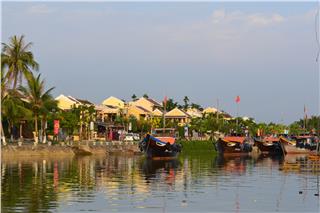
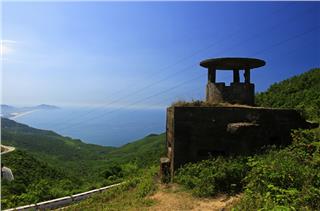
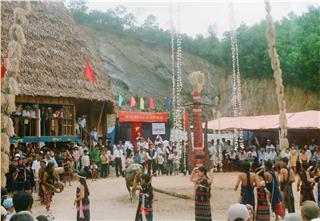
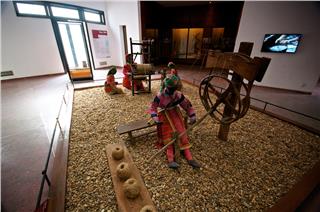
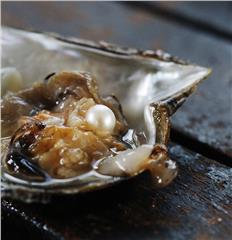

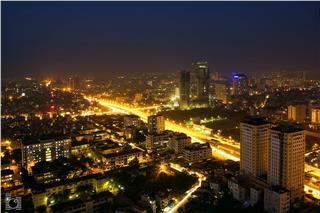

Spreading over an area of appropriate 10000 hectares, and being dubbed as the “Halong Bay on land”, Trang An scenic landscape complex is located about 90 kilometers to the South. The scenic population includes Hoa Lu Ancient Capital, Tam Coc – Bich Dong, Trang An ecological tourist area and Bai Dinh Pagoda. Trang An scenic population is also known as the first capital of independent Vietnam over 10 centuries ago.
By taking advantage of the nature, using mountains as walls, rivers as the trench, connecting the limestone mountains together to create the artificial walls, a stable capital, a unique stone city that has the private feature of the human. The landscape of Trang An has a special beauty, like a forest of limestone mountains raised and divided into a spectacular limestone landscape. Evidences of Hoa Binh Culture in prehistory found here demonstrate that this is the inhabitation of the ancient Vietnamese people. Trang An is a cradle of the prehistoric men in Vietnam.
Trinh temple – Phu Dot is the first destination in the journey discovering the Trang An ecological tourist area. This is the place worshipping 4 first generals of Dai Viet and 2 meritorious officials of Dinh dynasty.
In Hoa Lu ancient capital, there are many names beginning by word “Phu” (Palace). This word is understood according to 2 means. Firstly, these were once the palace to camp and work of the officials. After that, Hoa Lu capital became the ancient capital, the work place of officials and generals of Dinh dynasty turned into the shrines. These shrines are understood as the palace like temples. The word “palace” under the Dinh and Tien Le dynasty is understood as the government offices. When the capital has the fluctuation, this place became the large and powerful rearguard both in the food and troops. After that the generals of Dinh and Le Dynasty were retirement, they lived here. The historical research, the documents of the Dinh and Tien Le dynasty is not much, so we have to associate with many legends, steles to supple for the history. This is one of the points has to study when studying Hoa Lu capital.
In Phu Dot, there are some great paintings and old parallel sentences. The most typical great painting is “Nhat Quan Nguyet”. This is the great painting is often worship in the temples of Dinh Dien and Nguyen Bac. Or two old parallel sentences praise the great merit of four generals who helped King Dinh found the dynasty.
To serve the religious demands of visitors, in 2010, the local people proposed to build a temple worshiping for generals of Dinh dynasty including Nguyen Bac, Trinh Tu, Dinh Dien and Luu Co. The architecture of the temple has the scrip “Dinh”. The entire system of pillars, purlins, gates were made of ironwood. Ten parallel sentences and two great paintings praise the virtues of 4 people in the four pillars of the court.
Trang An cave has 6 palaces worshipping two generals: Ta Thanh Do and Huu Thanh Do. Legend has it that two generals stationed in this area. Trang An is known because it tied to the daily activities of local people. Trang An cave looks like a water color painting that is romance but spectacular and noble. The beauty is clearly expressed in the works as temples, shrines that keep the footprints of the generals and imperial soldiers of the Dinh dynasty and many famous names once setting food on this land.
Now, Trang An is well-known for the poetic scenic landscapes of the rolling mountains interspersed the vast river. This beauty is the harmony between the heaven and the earth, the beauty associates with the thrilling legends without coming here, tourists cannot explore. The beauty experiences many years wearing the shirt sediment. Trang An is seen as a silent not, a unique sketchy line that is endowed by the nature. It has embellished Vietnam picture more beautiful and vivid.
In the journey visiting Trang An, tourists can visit caves as Chau Bau (Treasure cave), Dia Linh, Hang Toi (Dark Cave) and Hang Sang (Light Cave). Dia Linh cave or Treasure cave is about 150 meters long; one part of the cave is now being put into tourism. Called the Treasure cave because of coming here, tourists seem to get lost in a fossil treasure cave. It takes hundreds of millions of years to form these stalactites. The stalactite brings the typical beauty and nearly represents for stalactites of the whole cave. Through Dia Linh Cave, tourists will reach Dark Cave with the length of 230 meters. This is also a frequent aquatic cave having many beautiful stalactites in Trang An.
Local people has put the stone stalactites here many funny names according to their shapes as the Buddha’ hand fruit, hanger monk’s robber of Buddhist, bird’s beaks, legs of elephants. After visiting the Dark Cave, tourists will drop by Light Cave. These sinewy and rough stalactites create a simple beauty of the cave. The name of each cave has a private meaning bringing aspirations of the human. The ancient people named the cave to send a great humanist philosophy. Through Light Cave, we will come to Dark Cave valley. The valley has the natural area of 154,892 meters square. Here, there are hydro caves with beautiful river valleys, so in the development project of this area, planners have put forwards the idea to choose 12 beautiful river valleys and form the ecological cultural islands. These islands will be named according to the order of 12 animal designations in the Eastern culture.
Spread over hundreds of millions of years to form, Trang An scenic landscape complex with the complex and long historical development through the important tectonic periods and the constant fault of rock bloc created rolling mountains. The tectonic context is a key factor creating the diversity of geology, geomorphology and hydrology network and the diversity of caves in the limestone mountain complex of Trang An scenic landscape.
In previous years, the experts of the Vietnam Archeology Institute and Cambridge University of British conducted surveys and researches on this area. The result showed that the imprint of the ancient people appeared quite dense in Trong cave about 20 thousand years ago, Boi cave about 10 thousand years ago. Besides traces of the prehistoric life, Trang An scenic landscape area shows that plenty of documentation on their activities during the period of geological changes in the sea level here about 5000 to 700 years ago and the period of the constant settlement from the stone age to the bronze age and iron age in association with the archeological cultures of pre-Hoa Binh, Hoa Binh, Da But, Dong Son on this area.
Bai Linh was formerly the home to ancient Vietnamese people. At that time, the sea was about 3 -4 kilometers away from Truong Yen, Hoa Lu. So, until now, we have enough evidences of the ancient Vietnamese people from the Cuc Phuong primeval forest to the coastal plain through the archaeological relics found from the cave of ancient people in Cuc Phuong and Bai Dinh Mountain. Bai Dinh, Trang An is considered as the connecting bridge to move toward the coastal plain of the ancient Vietnamese people in Ninh Binh. Scientists are very interested in preserving the stability of the region.
Behind me was a group of children participating in the excavation work. The concept of community archeology is simply the participation of the public in archaeological activities, including an understanding of the cultural heritage and the archaeological work. Participate in many different levels as the defense or some simple activities. For example, in some countries, such as Thailand, all people from the old to students can participate in the excavation, study and grading, even the display.
Bai Dinh Mountain has the caves worshipping the Buddha, Gods and Fairy on the top mountain since ancient time, now this is a Buddhist spiritual center in the Trang An ecological tourist complex, located in Gia Sinh commune, Gia Vien district, Ninh Binh. According to the folk, to arrive at the top of Bai Linh Mountain, visitors have to go through 3 “Bai” including Bai village, Son Thanh commune, Nho Quan district, Lang bai, Son lai commune, Nho Quan district and Ba Rau hill. This region has was ancient worship space, of which Bai Dinh is both midpoint and the culmination of the religious worship of a whole area including 3 provinces Ninh Binh, Thanh Hoa and Hoa Binh. The legend has it King Le Thanh Tong (1460 - 1496) visited Bai Dinh Mountain, when visiting the temple on Bai Dinh Mountain, the King wrote 4 word: “Ninh Dinh Danh Lam”.
Sang cave (Light cave) is about 25 meters long, 15 meters wide and the natural light so it was called Sang cave. The cave worships the Buddhist so it was called cave or temple cave. There is Thach Am meaning stone temple worshipping Saint Nguyen Minh Khong, the national professor of the Ly dynasty.
Under the Dinh – Tien Le dynasty, Hoa Lu capital became the Buddhist center of the country with many temples and many famous monks. The cave worships Cao Son God located in the South, one of 4 “Hoa Lu Tu Tran” in the Dinh and Le dynasty. The Nguyen Minh Phong temple was built between the arms of Bai Dinh Mountain. The upper floor was built by the wood based on the “Dinh” script. The Saint Nguyen has the big credit in the healing for the King and people. He along With Tran Hung Dao is the real historical character reversed as the Saint Nguyen and Saint Tran. In folklore, Nguyen Minh Khong is seen as a Saint in the immortal quartet in Vietnam and grandfather of bronze casting. Saint Nguyen had positive contributions to the renaissance and cultural development of Vietnam in the areas philosophy, literature, architecture, art, and engineering as a foundation for development of Vietnamese culture later.
In Ninh Binh, there are many other temples worshiping the Saint Nguyen as Dich Loc temple, Gia Vien district, Hoa Lu cave, Nhat Tru temple in Am Tien cave… Facing with the Light Cave is Dark Cave that worships three Holy Mothers. Dark cave was located in the southeast. Thus the Bai Dinh is the center and intersection of two cylindrical in East – West – South – North and the northwest of Northern Delta. It is also the center of the traditional customs and rituals that worships 3 religions Buddhism, Taoism and Fairy and borders 5 provinces including Ninh Binh, Thanh Hoa, Hoa Binh, Ha Nam and Nam Dinh.
The fairy well in the cave worshiping Holy Mother has the groundwater flowing Lung hole and the lake under the foot of Bai Dinh Mountain. The Maitreya garden on the Ba Rau hilltop evokes image of the Saint Nguyen Minh Khong, a legendary giant. Maitreya Buddha statue made of bronze having the height of 10 meters and weight of 80 tons. The statue was made bronze casting artisans in Y Yen district, Nam Dinh province.
Bai Dinh Pagoda was built on the land nearly the Buddhist center under the Dinh – Tien Le dynasty and the first days of the Ly dynasty in the sacred space of Hoa Lu ancient capital to Tran, Le and Nguyen afterwards. This is a sacred space with larges temples and pagodas attracting many people. Along with the ancient temple on the top of Bai Dinh Mountain that is known as “Bai Dinh Co Tu”, now Buddhist people build new temple on the Ba Rau hillside under Bai Dinh Mountain’s base known as “Bai Dinh Tan Tu”, new Bai Dinh Pagoda with many large and small works.
The main works with the huge scale and shapes are inside three gates, outside three gates, Quanyin Bodhisattva shrine, Tam The shrine, Bo De tower. Bai Dinh Pagoda was awarded the records by Vietnam Guinness book. For example, the temple has the biggest bell-tower, bronze bell, the biggest and heaviest Shakyamuni bronze statue, the largest and most beautiful wooden altar, three biggest and heaviest Tam The statues in Vietnam. The shrine of Quanyin Bodhisattva was built completely by ironwood and reached the largest and heaviest Quanyin Bodhisattva bronze statue in Vietnam. According to the planning, the new Bai Dinh Pagoda includes a large area and many large works that is called the Bai Dinh Buddhist spiritual center with the total area of 3000 kilometer square includes 20 works, of which the shrine worshiping Buddhist Tam The has the area of 32500 kilometer square. The Shakyamuni shrine is 2000 meter square wide, the Quanyin Bodhisattva shrine is 676 meter square. The shrine of 500 Arhats is 12000 meter square. Other ancillary works continue to be implemented as of the cultural park and Buddhist academy, Dam Thi Lake, the natural conservation area, the paved road around Bai Dinh area and other spiritual works. Here, visitors can contemplate the landscape of the poetic river and mountain, the spectacular architecture of the Buddhist land and heaven landscape amidst the earth.
The Prime Ministry allows Trang An scenic landscape complex in Ninh Binh to prepare the documents and sent to UNESCO in order to recognize Trang An as a world heritage. Ninh Binh province is also positively implementing this work. Recently the province has sent delegations to work in European countries. Vietnam's delegation at UNESCO in Paris is also very supportive; they also visited Trang An and saw that it is very likely to become the world cultural heritage. Then we had a meeting with the head of Cultural Heritage in the Asia Pacific region of UNESCO in France, we reported the documents and offered their help through Vietnam's delegation at UNESCO to ensure objectivity.
When traveling Trang An, tourists will have the chance to participate in traditional festivals. Though the journey to the Buddhist land is sometime hard, it brings the balance in the mind and health for visitors.
Source: VTV2 – VTV.vn

 Đặt vé máy bay cho người Việt?
Bấm vào đây
Đặt vé máy bay cho người Việt?
Bấm vào đây
Our service uses cookies for technical, analytical and marketing purposes. See our Cookie và Privacy policies for more information. If you agree to this, just keep browsing.


